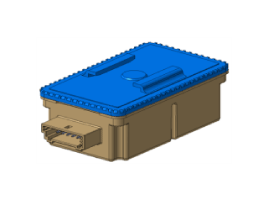 Hyundai Equus: TPMS Receiver Description and Operation
Second generation VI (2009–2025) / Hyundai Equus VI 2009-2025 Service Manual / Suspension System / Tire Pressure Monitoring System / TPMS Receiver Description and Operation
Hyundai Equus: TPMS Receiver Description and Operation
Second generation VI (2009–2025) / Hyundai Equus VI 2009-2025 Service Manual / Suspension System / Tire Pressure Monitoring System / TPMS Receiver Description and Operation
Second generation VI (2009–2025) / Hyundai Equus VI 2009-2025 Service Manual / Suspension System / Tire Pressure Monitoring System / TPMS Receiver Description and Operation
| Description |

| 1. |
Mode
|
| 2. |
Overview
|
| Operation |
| 1. |
General Function
|
| 2. |
General Conditions to Learn New Sensors:
|
| 3. |
General Conditions to Un-Learn a sensor that is removed:
|
 TPMS Sensor Repair procedures
TPMS Sensor Repair procedures
Removal
Tire Removal
1.
Deflate tire & remove balance weights.
•
The tire bead should be broken approx. 90° from the valve side of the wheel. The bead breaker sho ...
 TPMS Receiver Repair procedures
TPMS Receiver Repair procedures
Replacement
When the receiver first arrives for replacement:
1)
It will be in Virgin State.
2)
It will not have any sensor ID's memorized.
It ...
See also:
Glove Box Housing Components and Components Location
Component Location
1. Glove box housing
...
Occupant classification system
Your vehicle is equipped with an occupant classification system in the front
passenger's seat.
The occupant classification system is designed to detect the presence of a properly-seated
f ...
Brake hoses and lines
Visually check for proper installation, chafing, cracks, deterioration and any
leakage. Replace any deteriorated or damaged parts immediately. ...
Categories
Hyundai Equus Manuals
© 2011-2025 Copyright www.heqmanual.com
